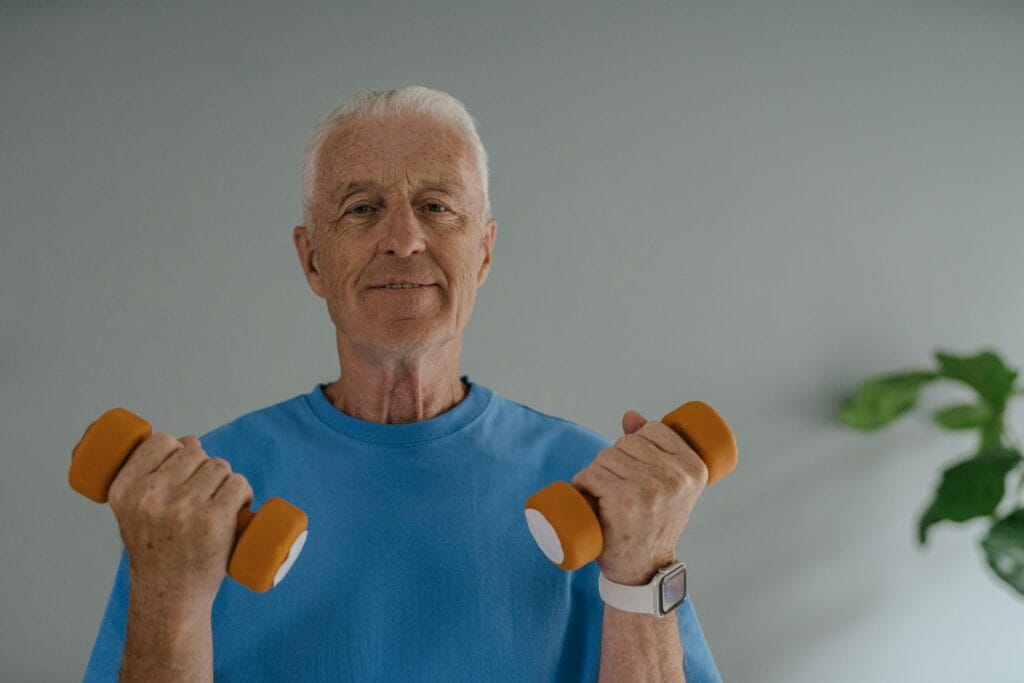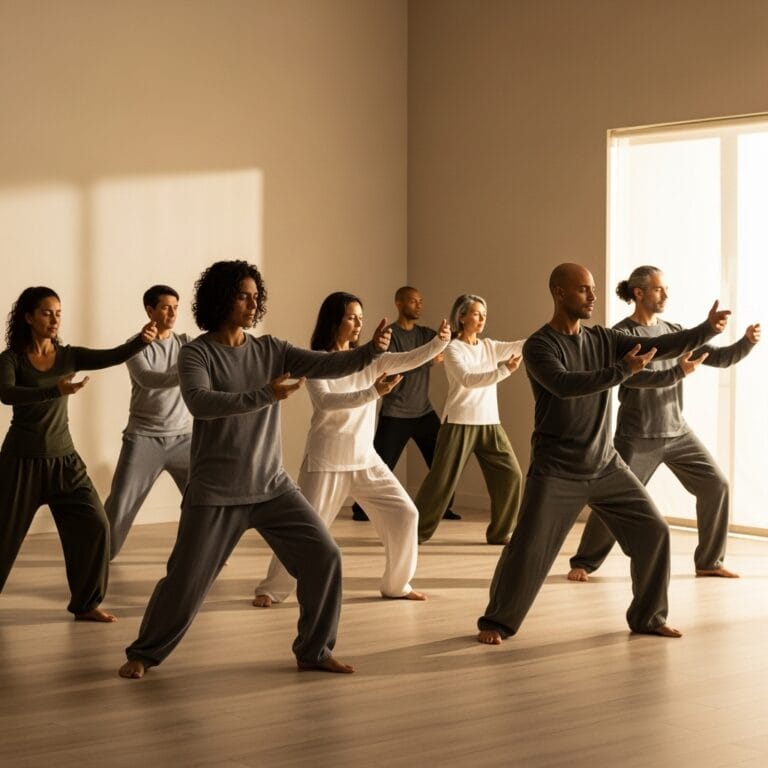FREE SHIPPING OVER $50
10 Powerful Exercises That Fight Frailty and Keep You Moving Strong After 50

For many of us, the years after 50 are filled with new adventures, more freedom, and a new perspective on life. But for some, this period can also be marked by a quiet, subtle fear: the fear of losing strength, independence, and the ability to move with ease. This decline, often referred to as frailty, is not an inevitable part of the aging process. It is a condition that you have the power to prevent, and in some cases, even reverse.
The truth is, building a strong, resilient body is one of the most powerful things you can do to ensure a vibrant, independent future. And it doesn’t require a gym membership or hours of grueling workouts. It requires a handful of smart, effective exercises that are backed by science and designed to build the foundational strength you need. This article will reveal 10 powerful exercises that directly fight frailty, and we’ll show you how to start building a body that feels capable, agile, and ready for anything life throws your way.
The Science of Staying Strong: Why We Need These Moves
To understand why these exercises are so effective, you need to know what happens to our bodies as we age. Three key processes are at the root of frailty:
- Sarcopenia (Muscle Loss): Starting in our 30s, we begin to lose muscle mass, and this process accelerates after 50. By the time we reach our 70s, we can lose up to 50% of the muscle we had in our 20s. This loss of muscle directly impacts our strength, metabolism, and ability to perform daily tasks.
- Decline in Bone Density: As we age, our bones become less dense, making them more susceptible to fractures. This is a major concern, particularly for women, and is a key component of frailty.
- Loss of Balance and Mobility: Our sense of balance and our ability to move freely and without pain can decline over time. This increases the risk of falls, which are a leading cause of injury and a major step toward frailty.
The good news is that these three processes can be directly addressed with the right kind of physical activity. These 10 exercises are designed to target each of these areas, building muscle, strengthening bones, and improving balance and coordination.
10 Powerful Exercises to Fight Frailty and Keep You Moving Strong
Here are 10 foundational exercises that will form the backbone of your plan to build a resilient, capable body after 50.
1. The Goblet Squat
Why it works: The squat is a fundamental human movement. By practicing the goblet squat, you build incredible lower-body strength in your glutes, quadriceps, and hamstrings. This directly translates to everyday movements like getting up from a chair, climbing stairs, and staying active with ease. It also helps to build bone density in your hips and spine.
How to do it: Stand with your feet shoulder-width apart, holding a single dumbbell or kettlebell against your chest with both hands. With your back straight, lower your hips as if you are sitting into a chair. Go as low as you can comfortably while keeping your heels on the floor. Push through your feet to return to the starting position.
2. Glute Bridge
Why it works: Strong glutes are crucial for good posture, a healthy back, and powerful movements. This exercise isolates the glutes and hamstrings, helping to reduce back pain and improve functional strength without putting stress on your joints.
How to do it: Lie on your back with your knees bent and feet flat on the floor, about a foot from your glutes. Squeeze your glutes and lift your hips toward the ceiling until your body forms a straight line from your shoulders to your knees. Hold for a moment, then slowly lower back down.
3. Dumbbell Row
Why it works: This is an essential exercise for fighting poor posture and building a strong upper back. A strong back is key to carrying groceries, lifting bags, and maintaining a proud, upright posture.
How to do it: Place your left knee and left hand on a bench or sturdy chair. Step your right leg back. Hold a dumbbell in your right hand, letting it hang straight down. Squeeze your back muscles and pull the dumbbell up to your chest, keeping your elbow close to your body. Slowly lower it back down. Repeat on the other side.
4. Modified Push-Up
Why it works: Push-ups build incredible upper body strength in your chest, shoulders, and triceps. This is essential for pushing yourself up from the ground, getting out of a pool, and maintaining a high level of functional fitness. Modifying the exercise makes it accessible to everyone.
How to do it: Stand facing a wall, a sturdy kitchen counter, or a bench, and place your hands on it at shoulder-width. Slowly lower your chest toward the surface, keeping your back straight. Push back to the starting position. As you get stronger, you can move to a lower surface.
5. Overhead Press
Why it works: This move directly builds strength in your shoulders and core. Strong shoulders are vital for everyday movements like reaching for something on a high shelf, putting on a jacket, or lifting an item overhead.
How to do it: Stand or sit with a straight back, holding a light dumbbell in each hand at your shoulders, palms facing forward. Press the weights straight up overhead until your arms are fully extended. Slowly lower them back down to the starting position.
6. Bird-Dog
Why it works: This exercise is a powerhouse for building core stability and balance. It teaches your body to coordinate movements and maintain a neutral spine, which is crucial for preventing back pain and improving overall body control.
How to do it: Start on your hands and knees. Engage your core and slowly extend your right arm forward and your left leg back, keeping both parallel to the floor. Hold for a moment, then return to the starting position and repeat on the other side.
7. Single-Leg Stance
Why it works: This simple exercise is a direct combatant against falls. By strengthening the muscles in your ankles, feet, and core, it dramatically improves your balance and stability.
How to do it: Stand next to a wall or a sturdy chair for support if needed. Slowly lift one foot off the floor and hold the position for as long as you can, aiming for 30 seconds. Repeat on the other side. As you get more confident, try to do it without holding onto the wall.
8. Reverse Lunge
Why it works: The reverse lunge is easier on the knees than a forward lunge while still building strength in your hips, glutes, and quadriceps. It also works on your balance and hip stability, which are key for preventing falls.
How to do it: Stand with your feet hip-width apart. Take a big step backward with one leg and lower your hips until both knees are bent at a 90-degree angle. Push through your front foot to return to the starting position. Alternate legs with each repetition.
9. Standing Calf Raise
Why it works: Strong calf muscles are essential for ankle stability and balance, especially when navigating uneven surfaces. This simple exercise helps to build power in the muscles that help you walk and stand tall.
How to do it: Stand with your feet hip-width apart. Rise up onto your toes, squeezing your calf muscles. Hold for a moment, then slowly lower your heels back to the floor. For an added challenge, perform this while holding onto a dumbbell in each hand.
10. Plank
Why it works: The plank is the ultimate core stability exercise. It strengthens the muscles that support your spine, improve your posture, and act as the foundation for all your movements. A strong core is the secret to a powerful, capable body.
How to do it: Start in a push-up position with your hands directly under your shoulders and a straight line from your head to your heels. Hold for as long as you can, aiming to build up to 30-60 seconds. For an easier modification, you can perform this on your knees.
Putting It All Together: Your Weekly Plan
You don’t need to do all of these exercises every day. The key is consistency and gradual progression.
- Frequency: Aim for 2-3 sessions per week, with at least one rest day in between.
- Sets and Reps: For each exercise, start with 2 sets of 10-12 repetitions. As you get stronger, you can increase to 3 sets.
- Progression: Once 12 repetitions feel easy, it’s time to make the exercise more challenging. This could mean adding a light dumbbell, slowing down the movement, or moving to a more challenging variation (e.g., from a wall push-up to a knee push-up).
A Holistic Approach to Longevity
While these exercises are incredibly effective, they are just one part of the puzzle. To truly build a body that fights frailty and embraces longevity, you must also focus on:
- Nutrition: Make sure you are getting enough protein to support muscle repair and growth. Lean protein sources like chicken, fish, beans, and Greek yogurt are essential.
- Rest and Recovery: Your muscles get stronger when you are resting. Make sure you are getting adequate sleep and taking rest days to allow your body to rebuild.
- Listen to Your Body: This is the most important rule. If an exercise causes pain, stop. There is no benefit in pushing through pain. Find a modification or a different exercise that feels good and works for your body.
Conclusion
The path to a vibrant, independent life after 50 is not a secret. It’s a combination of smart, consistent effort and the right kind of physical activity. By incorporating these 10 powerful exercises into your weekly routine, you are taking a proactive step toward a future filled with strength, agility, and the freedom to move through the world with confidence. Don’t let the fear of frailty hold you back; instead, empower yourself with the knowledge and the tools to live strong for life.
Related Articles
- These Women Over 60 Got Stronger, Healthier, and Happier—Thanks to Lifting Weights
- Get Shredded in 12 Weeks: The Ultimate Program to Stay Jacked Through 2025
- Want Bigger Gains in Less Time? This Workout Hack Cuts Your Gym Time by 40%
- Want to Stay Lean and Limber After 40? Do These 5 Exercises Every Day
- 3 Years of Back Pain Gone in 2 Weeks—Thanks to This Surprising Exercise



